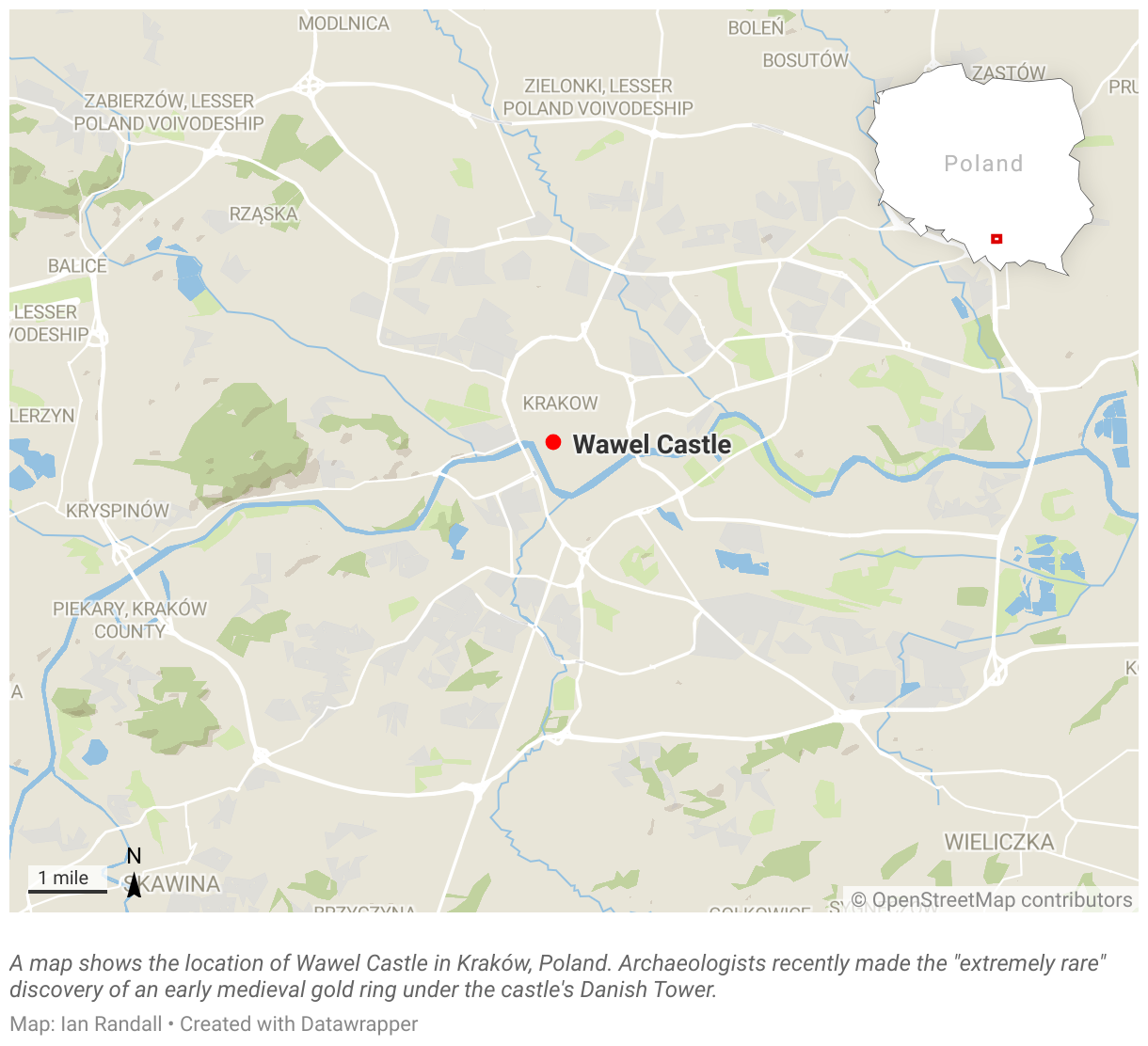‘Extremely Rare’ Gold Medieval Artifact Found in Bowels of Castle

An extremely rare medieval artifact has been discovered in the bowels of a castle in Poland.
The artifact in question is a beautifully decorated gold ring, which researcher Jerzy Trzebiński found during ongoing investigations at Wawel Royal Castle in Kraków, the second-largest city in the central European country.
Trzebiński discovered the gold ring below the so-called Danish Tower—one of the castle’s four residential towers. The castle is part of a fortified medieval architectural complex that sits atop a limestone outcrop called Wawel Hill on the left bank of the Vistula River.

Wawel Royal Castle
The complex is considered to be perhaps the most historically and culturally significant site in all of Poland, containing numerous buildings of great importance—such as the Wawel Cathedral and the castle itself.
The cathedral was built around 1,000 years ago and once served as the site where Polish monarchs were crowned and buried. Construction of the current castle, meanwhile, is thought to have begun in the 13th or 14th centuries, although it was enlarged over time.
The castle served as the residence of Polish kings for centuries, but it is now home to one of the most-visited art museums in the country.
The Wawel Hill complex forms part of the Historic Centre of Kraków, which was declared a UNESCO World Heritage Site in 1978. The historic center, the former capital of Poland, is situated at the foot of the Wawel complex and features Europe’s largest market square, as well as numerous historical houses, palaces and churches.
The golden ring recently found in the castle complex was uncovered in an archaeological layer, lying on top of the remains of a stone structure—probably some kind of defensive shaft. The gold artifact, which is thought to date from the 11th or 12th centuries, features a decoration consisting of two opposing anthropomorphic faces.
“Wawel never ceases to amaze us. Recently, an extremely rare discovery has been made in the form of a golden early medieval ring!” a statement from the castle museum read.
The museum added that the find was a “unique discovery”—not least because only a handful of medieval gold rings are known from Poland. These types of ornaments from this period and region are usually completely devoid of decoration, or featured only simple geometric patterns.
Wawel nieustannie nas zaskakuje. W ostatnim czasie dokonano niezwykle rzadkiego odkrycia w postaci złotego, wczesnośredniowiecznego pierścienia! 🤯 💍Zabytek został znaleziony w czasie trwających…
“The specimen uncovered at Wawel is unique because of its decoration,” the museum said. “This is the only example where human—and, in general, figurative—images are depicted on an early medieval ring from Poland. You have to admit it is impressive!”
In addition, the ornament is devoid of references to Christianity, which began to establish itself in Poland in the 10th century. Experts believe the two opposing faces could be a reference to the two-faced god Janus from Roman mythology.
The shape of the artifact is quite typical for the Polish region, so it appears that it was made locally.
It is thought that the ornament would have belonged to a member of Poland’s first ruling dynasty, the Piasts, who led the country between the 10th and 14th centuries.

Do you have a tip on a science story that Newsweek should be covering? Do you have a question about medieval history? Let us know via science@newsweek.com.
Uncommon Knowledge
Newsweek is committed to challenging conventional wisdom and finding connections in the search for common ground.
Newsweek is committed to challenging conventional wisdom and finding connections in the search for common ground.





